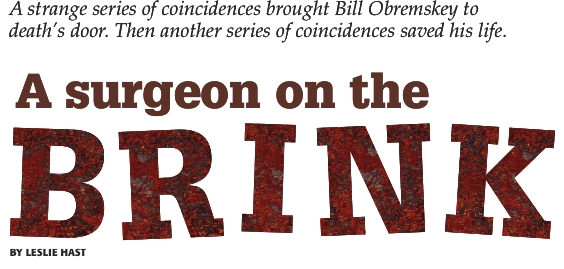There’s no way to ever really know what put Bill Obremskey, M.D., on his deathbed last
summer, but the prevailing theory is a 30-year case of athlete’s foot.
The tiny cracks between his toes allowed a potent bacterium known as Group A
Streptococcus to enter his body and resulted in a harrowing case of necrotizing
fasciitis, more commonly—and dramatically—referred to as the disease caused by “flesh-eating bacteria.”
Necrotizing fasciitis is deadly in 20 percent of patients, and those who do
survive are often missing limbs or chunks of flesh and muscle where the
infection has invaded and killed tissue. When the patient also develops toxic
shock syndrome, as Obremskey did, mortality rates shoot to 50 percent and
amputation rates to 80 percent.
But he emerged from the ordeal in a miniscule minority, those with no lasting
effects—no pain, no weakness and certainly no missing limbs.
Obremskey said it is unheard-of to contract the infection from a patient, but
that is exactly what happened to him last June. Addison May, M.D., medical
director of the Surgical Intensive Care Unit, was trying to save a patient, a
construction worker who had presented with necrotizing fasciitis after concrete
bricks fell on the back of his legs on the job. He determined that one of the
man’s legs needed to be amputated and called in Obremskey, an orthopaedic trauma
surgeon.
“The infection had begun in one area and just spread, spread, spread…much quicker and more aggressively than usual,” Obremskey recalled. “In my brain I thought ‘This is like “The Andromeda Strain.” How does bacteria not take over the world if it’s this virulent?’”



